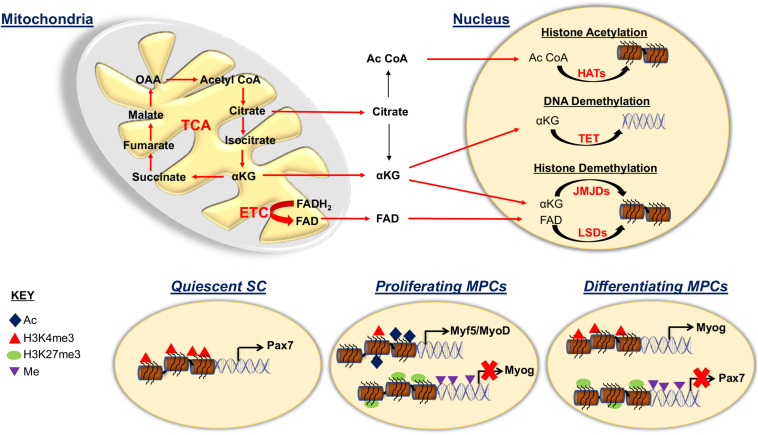FIGURE 3.
Mitochondrial role for epigenetic regulation of satellite cell fates. Representation illustrating the involvement of the mitochondria for histone acetylation (Ac) and methylation and of DNA methylation (Me) in the maintenance and progression of SC fates. The tricarboxylic acid (TCA) cycle intermediates citrate, acetyl CoA (Ac CoA) and α ketoglutarate (αKG) as well as FAD oxidized from FADH2 in the electron transport chain (ETC), are exported from the mitochondria to be used for epigenetic modification of DNA and histones. Acetyl CoA is a substrate of histone acetyltransferases (HATs), αKG is a cofactor for both histone demethylases; Jumonji C domain demethylases (JMJDs) and DNA demethylases ten eleven translocases (TETs) and FAD is a cofactor for lysine specific demethylases (LSDs) that are associated with active transcription. During quiescence, SCs exhibit activated Pax7 due to H3K4me3 modification on the Pax7 promoter. Proliferative myogenic precursor cells (MPCs) contain the repressive histone modification H3K27me3 and DNA methylation at muscle specific gene promoters such as myogenin (Myog). MPCs also contain activation associated histone modifications characterized by augmented acetylation and H3K4me3 on the Myf5 and MyoD promoters. During differentiation, activation and repression associated histone modifications take place for Myog and Pax7 promoters, respectively.

